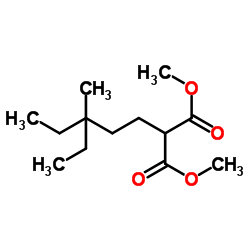
The sulphide melt melts from the mantle-derived mafic magma and is rich in ore, which is the key to the formation of magmatic copper-nickel sulphide deposits. Ore structure has important implications for the analysis of the migration of sulfide melts in magma (or porridge). The globular structure is rarely developed in magmatic copper-nickel sulphide deposits and is currently reported only in Russia's Noril'sk deposit, Western Australia's Black Swan deposit, and Canada's Sudbury deposit.
Postdoctoral researcher Wei Bo and co-director Wang Yan of the Department of Magmatic Action and Mineralization of the Guangzhou Institute of Geochemistry of the Chinese Academy of Sciences discovered the ore structure in a copper-nickel sulphide deposit in Hongqiling, northeastern China, and cooperated with foreign counterparts. The structure has been studied in depth. The Drifting River magmatic copper-nickel sulphide deposit in the Hongqiling area of ​​Jilin Province is located in the easternmost part of the Central Asia Orogen, with a nickel metal content of approximately 10,000 tons and an average nickel grade of 0.83 wt.% (Geological Bureau of Jilin Province, No.2 Geological Brigade, 1980 ). The ore-bearing rock mass mainly consists of the upper hornblade gabbro facies and the lower hornblende olive gabbro facies. The mineralization is located in the hornblende olive gabbro phase. There are three kinds of special ore structures: (1) globular structure, 2~10 mm sulfide aggregates are spherical or irregularly distributed in gabbro; (2) network structure, irregular sulfides Mesh veins are interspersed in the gabbro; (3) breccia-like structures, broken silicate mineral crystals or rocks are breccia-like in the sulphide.
The study found that the Ni/Cu ratio of sulfide ore varies from 1.6 to 34, indicating that the ore is very lean of Cu. The Ni-rich Cu-depleted sulfide melt may have a solidus temperature approaching or even exceeding 1000°C. At the same time, the Piaohechuan rock mass contains a large number of primary hornblende, indicating that its mother magma is relatively rich, while the water-rich mafic magma solidus temperature is below 1000°C. Therefore, the researchers believe that the sulphide melt has already started to solidify before the silicate is completely consolidated and maintains its original spherical shape. The early molten sulfide beads migrated to the bottom of the magma chamber due to heavier weight and gradually aggregated into the sulfide melt. The sulfide melt penetrated along the rock fissures when passing through the semi-melted silicate rocks. Into the formation of network-shaped ore; if the migrating sulfide melt decomposes and encapsulates the silicate melt/stacked crystals, it forms breccia-like ore. The study of the Drifting River magmatic copper-nickel sulphide deposits shows that the migration of sulfide melts determines the distribution of different types of ores. This is very important for the determination of bonanza sites.
The related research was published in the latest issue of the Geological Prospectus, the mainstream journal of Economic Geology.
Peptone Basic Information
CAS: 73049-73-7
MF: C13H24O4
MW: 244.32726
EINECS: 615-895-9
Mol File: 73049-73-7.mol
peptone Structure

solubility H2O: 50 mg/mL
form powder
color Dark cream powder
Odor Odorless
PH 6.5-7.5 (2% in H2O)
Water Solubility Soluble in water. Insoluble in alcohol.
Sensitive Moisture Sensitive & Hygroscopic
EPA Substance Registry System Peptones (73049-73-7)
peptone,peptone water,peptone composition,peptone water composition,peptone meaning,peptone water preparation
ShanDong YingLang Chemical Co.,LTD , https://www.sdylhgtrade.com